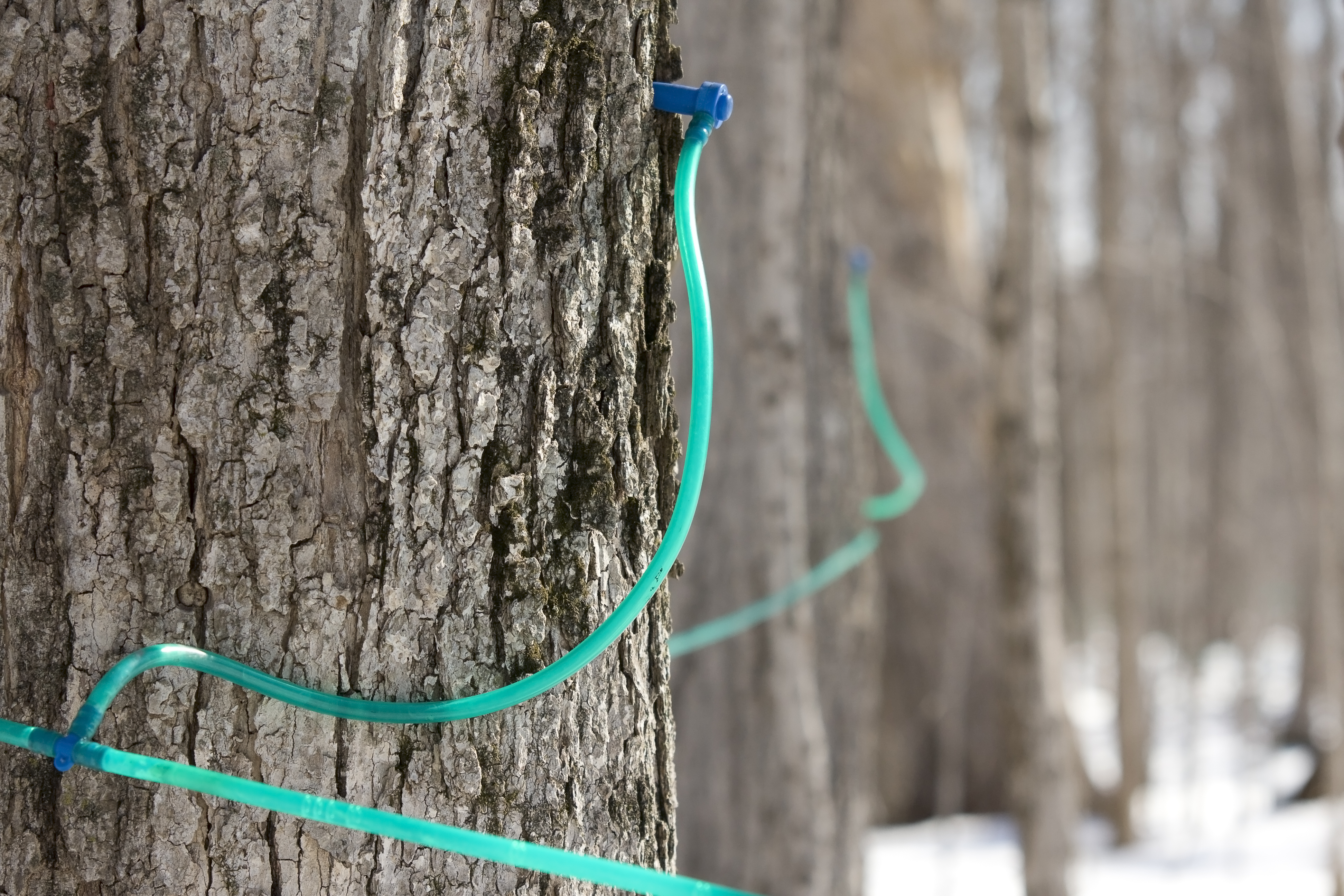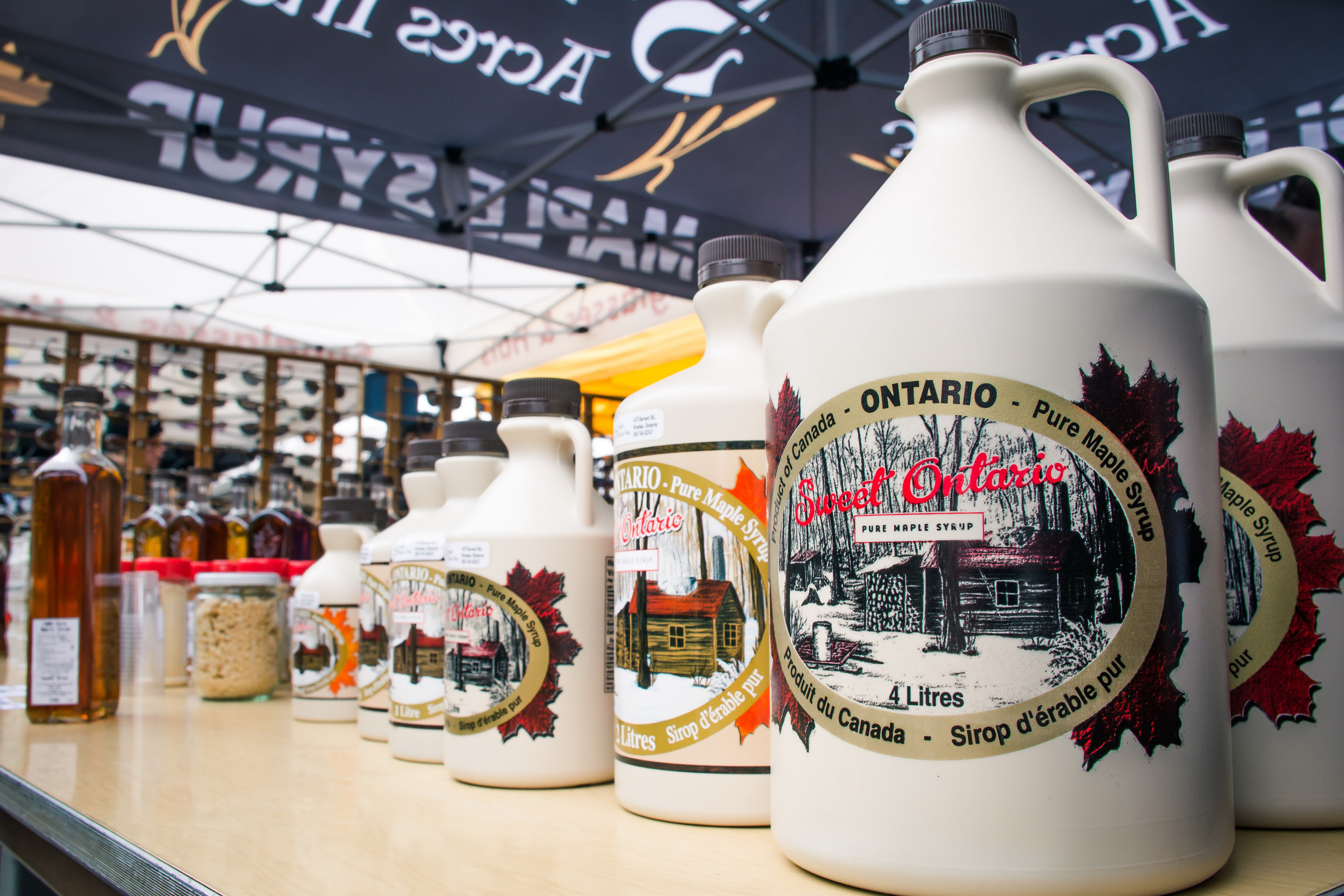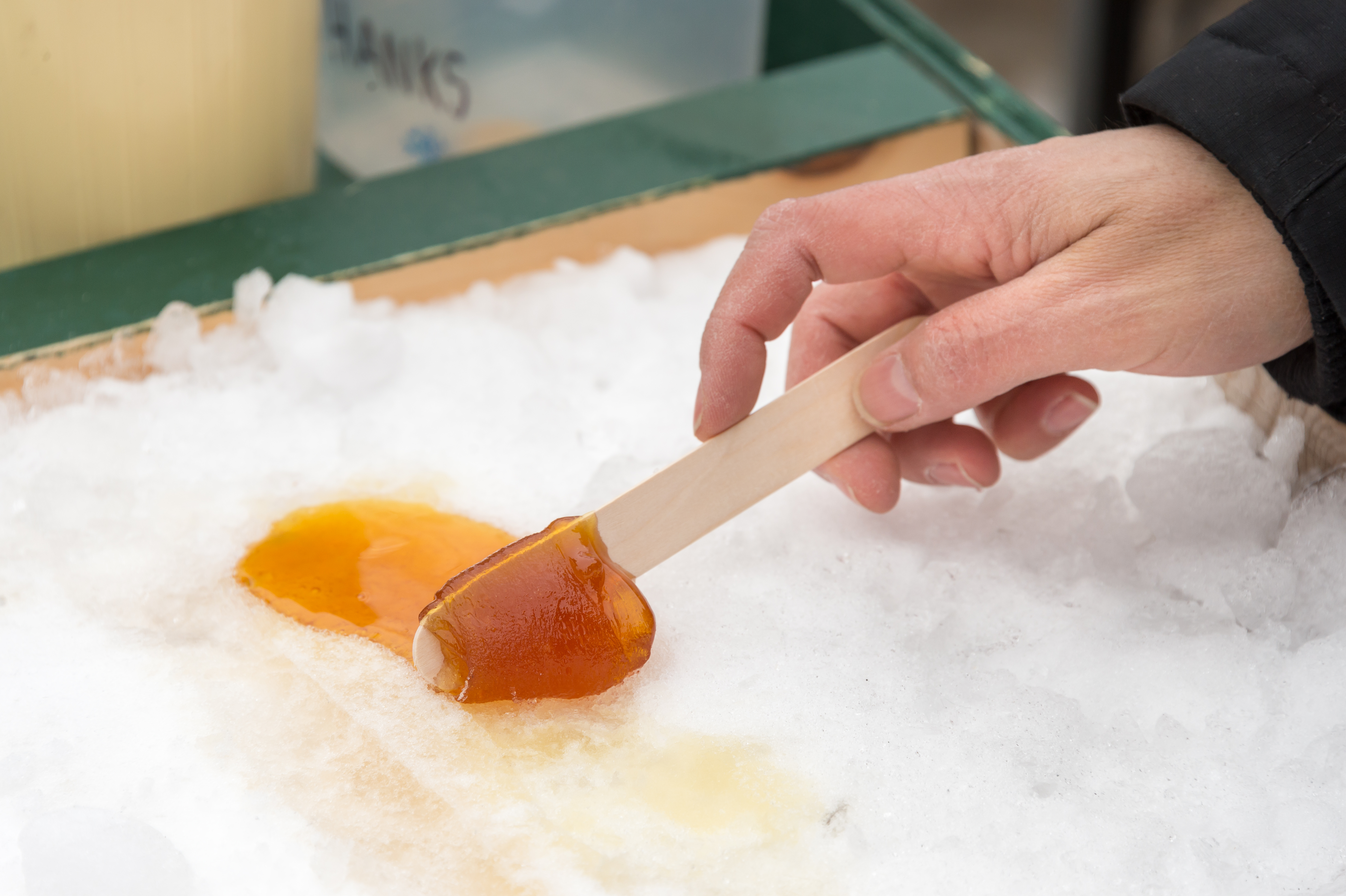Maple syrup is a sweet, flavorful liquid obtained from the sap of certain maple trees. The sugar maple tree ranks as the chief source of this delicious food product. Vermont leads the states of the United States in maple syrup production. But the Canadian province of Quebec produces more maple syrup than all the states together.

Maple sap is a colorless, watery solution that contains a type of sugar called sucrose and various amino acids and minerals. The U.S. and Canadian governments require that maple syrup consist of at least 65 1/2 percent of these solids. It usually takes 30 to 40 gallons (114 to 151 liters) of sap to make 1 gallon (3.8 liters) of maple syrup.
The typical maple flavors and amber (golden brown) colors develop during processing. Maple syrup is often classified by color. Lighter syrups are delicately flavored. Darker syrups are more strongly flavored.

People pour pure maple syrup on pancakes, waffles, and other foods. Because it is costly to produce, pure maple syrup is expensive. Many people use maple-flavored syrups that cost less. Most of these contain a small amount of maple syrup, which is blended with other sweeteners, such as cane-sugar syrup and corn syrup.
Production.
Syrup producers begin to collect sap from maple trees in early spring, when freezing nights are followed by warm days. The daily rise and fall of temperature causes the sap to start flowing. This period, known as the sugaring season, lasts from three to six weeks or until buds fall off the maple trees.
Syrup producers use one of two methods to collect the sap. In the older method, a producer drills one or more holes into a tree and drives a metal spout into each hole. The sap runs through the spout into a bucket that hangs from the spout. The producer empties the buckets into a large barrel, which is taken by sled or wagon to a building called a sugarhouse.
In the more modern method, a producer inserts plastic spouts into holes drilled in the trees. The sap runs through tubes connected to the spouts and into a pipeline system that carries sap to the sugarhouse. A properly managed pipeline system yields more sap than the bucket method. A pipeline system also requires less time and labor.
In the sugarhouse, workers boil the sap in a long, shallow pan called an evaporator. As the sap boils, water evaporates until pure maple syrup remains. The maple color and flavor also develop during this process. Late-season sap has less sugar and so must be boiled more to concentrate it, resulting in a darker syrup. Producers remove the syrup from the evaporator when its temperature reaches 219 °F (104 °C). They may boil the sap beyond the syrup stage to make maple butter, maple taffy, or maple sugar.
History.
Indigenous (native) peoples who lived near the Great Lakes and the St. Lawrence River produced maple sugar and syrup long before white explorers came to North America. Early French and English explorers wrote of the “sweet water” that the local people drew from trees and heated to make the maple products.
During the 1700’s and 1800’s, maple sugar ranked as an important food item. People in maple sugar producing areas traded it for various foods and services. Gradually, white cane sugar became less expensive than maple sugar. By the late 1800’s, cane sugar had replaced maple sugar for most purposes. At about that time, food manufacturers developed maple-flavored syrups.
Today, artificial maple flavorings are used in certain foods. But these flavorings do not taste exactly like pure maple syrup. Many people choose pure maple syrup for its natural ingredients and distinctive taste.

